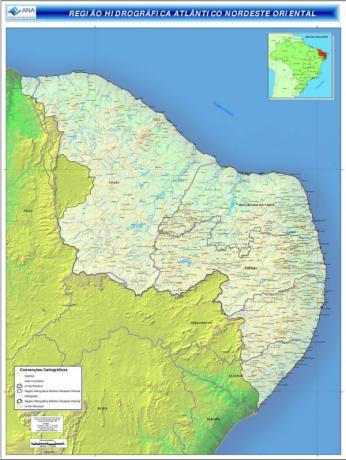At interregional migrations are those that occur within the national territory and between geographic regions. In the history of Brazil, migrations of this species were and still are related to economic cycles, which attract the population that seeks to achieve economic improvements and social benefits. We will highlight the great migratory currents that occurred in the Brazilian territory.
XVII century – extensive livestock: population displacement from the northeastern coast towards the Sertão and close to Central Brazil. This movement helped in the interiorization of the population, until then restricted to coastal regions. Livestock, at first, was intended to meet the needs of sugarcane mills. The need to expand borders motivated the Portuguese crown to explore the cattle raising activity for this purpose.
XVIII century – mining: population displacement from the Northeast and São Paulo towards the Minas Gerais region (Mato Grosso, Goiás and Minas Gerais). Mining initiated the modification of the structure of occupation in Brazil, until then concentrated in the Brazilian Northeast. At that time, the constitution of a repulsion area (currently the Northeast Region) and an attraction area (currently the Southeast Region) began.
XIX century(mainly in the 2nd half) – coffee activity: interiorization of the state of São Paulo (mineiros and baianos). Despite the predominance of external (Italian) immigrations, there was a large internal movement towards the state of São Paulo. Some farmers from São Paulo also migrated towards the north of the state of Paraná.
End of the 19th century and beginning of the 20th century – rubber cycle: northeastern people towards the Amazon, mostly migrants from the northeastern Sertão, mainly from the state of Ceará. After the decline of rubber, many headed to the Southeast.
Post World War II – industrial concentration: Northeastern towards the Southeast and South, with emphasis on the states of São Paulo and Rio de Janeiro. This movement was very intense, especially between the 1960s and 1980s. Northeastern people constituted the main labor force for civil construction and for the industrial sectors that employed workers with lesser qualifications. The lack of adequate public policies in the cities of the Southeast, as well as on the part of Northeastern rulers, who did little or nothing to offer better living conditions for its population, it triggered a series of structural problems in urban and rural areas of the Southeast.
Do not stop now... There's more after the advertising ;)
1960s – Construction of Brasilia: northeastern people towards Central Brazil. Formation of the Manaus Free Trade Zone and mineral extraction: Northeastern people towards the Amazon. State colonization projects: northeastern and southern farmers towards the Amazon. The military governments encouraged the colonization of the Amazon region, based on the occupation and protection of the extremes of the country. In this process, land conflicts began that persist to the present day, involving the forest peoples, miners, farmers and large corporations linked to logging and ores.
1970s and 1980s – agricultural borders: farmers from the South region towards Central Brazil. The Midwest became the country's new agricultural granary, highlighting livestock and grain production. Agricultural speculation overvalued the region's lands, causing rural exodus and putting pressure on the Cerrado areas.
1990s – agricultural borders: expansion of the borders of Central Brazil towards the Amazon. With the growth of agribusiness, especially soy, monocultures advanced towards the North Region, even reaching the state of Amapá.
2000's – Socioeconomic Motivations: return migrations, mainly from northeastern people. Although the Southeast continues to attract people from other regions, the precarious living conditions of urban centers and the lack of opportunities made many immigrants return to their home states, trying to prevent another generation from being handed over to marginality and the underemployments. Along with this factor, the economic growth achieved by some northeastern centers can be added. In addition, the 2010 Census pointed to the growth of medium-sized cities as one of the main factors responsible for attracting immigrants, which helps explain the negative migration balance in the Metropolitan Region of Sao Paulo. Also according to the IBGE, despite the continuity of inter-regional migratory flows, the volume of migration between Brazilian regions has decreased in recent years.
Julio César Lázaro da Silva
Brazil School Collaborator
Graduated in Geography from Universidade Estadual Paulista - UNESP
Master in Human Geography from Universidade Estadual Paulista - UNESP
Would you like to reference this text in a school or academic work? Look:
SILVA, Julius César Lázaro da. "Main Interregional Migrations in Brazil"; Brazil School. Available in: https://brasilescola.uol.com.br/brasil/principais-migracoes-inter-regionais-no-brasil.htm. Accessed on June 28, 2021.


